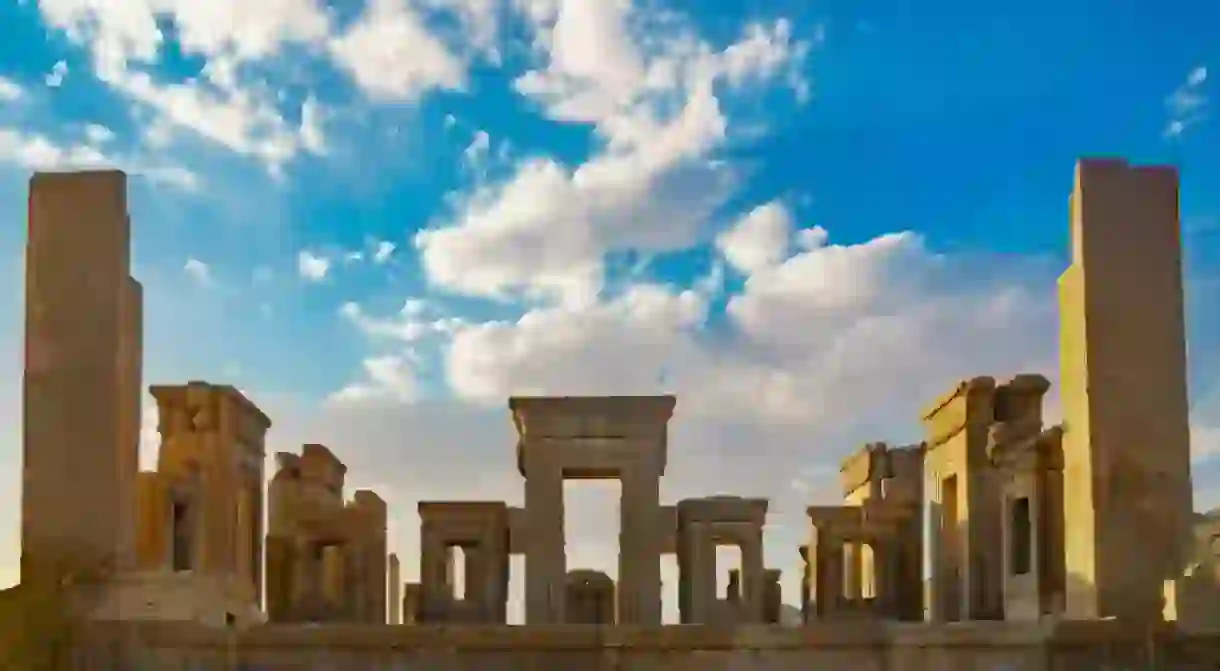The Best Day Trips From Shiraz

Culture Trip selects the best places to visit near the historic city of Shiraz.
Once home to the capital of Persia, southwest Iran is steeped in history and is a vibrant region for those seeking to learn more about the country’s culture. Its main city, Shiraz, is well connected and a good base for visitors looking to explore nearby locations, which are home to everything from UNESCO World Heritage Sites to nomadic towns.
Persepolis
Undoubtedly, this must be at the top of the list. In the 5th century BC, Persepolis, known as Takhte Jamshid to locals, was the ceremonial capital of the Achaemenid Empire. The site was built under King Xerves, Darius I and Cyrus the Great. Archaeological excavations took place in the 1930s and left huge columns, impressive reliefs and grand gateways visible, providing visitors with a fascinating insight into what the city once looked like. Make sure to go the top of the Gate of All Nations steps to see it in all its glory.

Naqsh-e Rostam
Naqsh-e Rostam is located high on a cliff and consists of four rock tombs. They are believed to belong to Darius I, Darius II, Artaxerxes and Xerxes I. Above the openings to the funeral chambers are reliefs which are similar to those in Persepolis, with kings standing on thrones. The seven Sassanian stone reliefs which are depicted show scenes of royal ceremonies and imperial conquests. On the opposite side of the cliff is Bun Khanak, which is now thought to have been a treasury, though it was once believed to have been an Achaemenid fire temple. The walls are inscribed with scenes of Sassanian victories.

Bishapur
Built in AD 266, Bishapur was a palace-town complex created by Shapur I. Shapur, along with his armies, defeated the Romans multiple times and a lot of the site was built by the Romans who were taken captive following the defeat of the Emperor Valerian in AD 260. As you enter the site, there are Sassanid walls with solid, round towers soaring up to three metres (10 feet) high. Some impressive Irano-Roman mosaics still exist, but the finest are in the Louvre Museum in Paris and Tehran’s National Museum. You can see the Palace of Shapur here, and Anahita’s Temple, where there is a staircase leading you to a tranquil underground pool. Take a picnic and a torch with you!
Firuz Abad
Here you will find the remains of the structures constructed by Ardashir Babakan, the lssanian Empire’s founder in the 3rd century BC. The Qal’eh-e Doktar, a three-tiered palace perched on top of a steep hill, is one of the town’s main attractions. There is a footbridge to walk over and then a short climb to reach it, and the views from the top are magnificent. You will also find Ardashir’s Palace a 20-minute drive away. The structure is nearly 1,800 years old, with impressive domes and soaring iwans (rectangular hall spaces).

Bavanat
The Bavanat region is only three hours from Shiraz. It is a stunning area made up of a 20-kilometre (12-mile) valley filled with walnut trees, which stands between the Zagros Mountains in the south and the northern deserts. Bavanat is the main town in the region, but Bazm is a popular place to go to discover nomadic culture. From around April until October, Khamseh nomads pitch their tents and live in the hills. You will hear a mix of Arabic, Turkish and Farsi spoken here.













